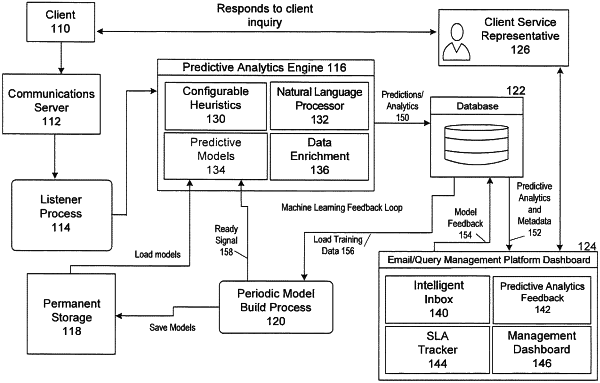| CPC G06Q 30/016 (2013.01) [G06F 40/205 (2020.01); G06F 40/279 (2020.01); G06N 5/02 (2013.01); G06N 20/00 (2019.01)] | 20 Claims |

|
1. A system that implements an intelligent customer service query management and routing system, the system comprising:
one or more processors; and memory, wherein the memory stores computer-readable instructions that, when executed by the one or more processors, cause the one or more processors to:
receive, via a communications server, a query from a client;
apply, via a predictive analytics engine, predictive analytics to the query, wherein the predictive analytics engine further applies data enrichment that fetches associated metadata;
provide, via a management platform dashboard, an interface for a customer service representative to provide feedback to the predictive analytics engine, wherein the management platform dashboard simultaneously comprises a plurality of icons, a plurality of links to contact information for various queries that each distinctly correspond to one of the plurality of links, a plurality of indications that display various statistics about queries that have been received, and a display of information about routing of the queries that have been received;
build, monitor, optimize and deploy, via a periodic model build processing component, one or more predictive models executed by the predictive analytics engine;
cache, via the memory, current training data to ensure that predictions are made in real-time;
phase out, via the memory, irrelevant training data;
receive, from the periodic model build processing component, a signal that indicates that the periodic model build processing component is ready to load the current training data;
retrieve the current training data from a cache of the memory;
use the current training data to retrain, via the periodic model build processing component, the one or more predictive models on a periodic basis; and
make, via the predictive analytics engine, real-time predictions by applying tags to the query, virtually immediately after receiving the query.
|